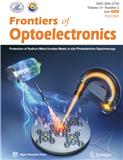
光电子前沿(英文)(Frontiers of Optoelectronics)(不收版面费) 知网万方目次维普目次
- CSCD
- 科核
- EI(中国2024)
- 主管单位:
中华人民共和国教育部
- 主办单位:
高等教育出版社有限公司、华中科技大学、中国光学学会
- 国际刊号:
2095-2759;EISSN2095-2767
- 国内刊号:
10-1029/TN
- 学科分类:
- 字数:
16000-88000
- 有无基金:
/有基金 100.0%
- 周期:
CN外文-季刊
- 特殊属性:
第一批认定学术期刊
- 电话:
027-87793063
- 邮箱:
mamm@hep.com.cn、foc@mail.hust.edu.cn(官网邮箱)
- 复合因子:
0
- 综合因子:
0
- 收录:
知网,万方目次,维普目次
- 级别:
CSCD,科核,EI(中国2024)
期刊简介
《光电子前沿》期刊已被查看: 次
更新频次
单位占比
一作占比
/有基金-100.0%投稿指南
1、投稿方式:在线投稿。
2、官网网址:http://journal.hep.com.cn/foe/
http://www.springer.com/journal/12200/
3、投稿系统:https://mc.manuscriptcentral.com/foe
4、出刊日期:季刊,逢季末月出版。
5、微信公众号信息:不收版面费。
2022年9月6日星期二
《光电子前沿(英文版)》简介
【官方微信公众号信息】
光电子前沿(Frontiers of Optoelectronics,FOE)期刊是由教育部发起、高等教育出版社出版、德国施普林格(Springer)出版公司海外发行的Frontiers系列英文学术期刊之一,以网络版和印刷版两种形式出版。由北京大学龚旗煌院士、华中科技大学张新亮教授共同担任主编。
其宗旨是介绍国际光电子领域最新研究成果和前沿进展,并致力成为本领域内研究人员与国内外同行进行快速学术交流的重要信息平台。该刊的联合主办单位是高等教育出版社、华中科技大学和中国光学学会,承办单位是武汉光电国家研究中心。FOE期刊已被ESCI, Ei, SCOPUS, CSCD等数据库收录。2015-2019年连续5年被评为中国国际影响力优秀学术期刊,2019年入选中国科技期刊卓越行动计划梯队项目。
FOE期刊是一个同行评议类的国际期刊,所刊登的文章侧重反映光子学和光电子学诸多领域的科学发现和技术革新,收稿范围包括但不限于:半导体光电子学、纳米光子学、信息光子学、能源光子学、超快光子学、生物医学光子学、非线性光子学、光纤光学、激光与太赫兹技术、智能光子学。期刊发表综述论文、研究论文、快报、评论和专刊等。
FOE期刊期待您的来稿!文章篇幅不限,不收版面费、录用后即在线发布。本刊仅接收全英文稿件,稿件必须以WORD格式通过ScholarOne网上投稿系统投稿。投稿网址:
https://mc.manuscriptcentral.com/foe
《光电子前沿(英文版)》投稿须知
【官网信息】
Frontiers of Optoelectronics
Instruction for Authors
Frontiers of Optoelectronics is an international peer-reviewed academic journal, supervised by the Ministry of Education of China, administered by Higher Education Press of China, Huazhong University of Science and Technology, and The Chinese Optical Society. The journal is jointly published by Higher Education Press of China and Springer on a quarterly basis in English. Online versions are available through both https://www.springer.com/engineering/electronics/journal/12200 and http://journal.hep.com.cn/foe.
The journal publishes primarily research article and review article by following the peer-review system. At least two reviewers are requested in the relevant study fields, and review feed-back will usually take about two weeks to three months.
1 Manuscript preparation and submission requirements
1.1 Manuscript submission
Authors are encouraged to submit their papers electronically via the online submission system (https://mc.manuscriptcentral.com/foe). If you need help from Frontiers of Optoelectronics, please contact the editorial office (E-mail: foc@mail.hust.edu.cn, mamm@hep.com.cn).
1.2 Submission requirements
Cover letter
A covering letter must accompany each submission indicating the name, address, and telephone number of the author to whom all correspondence is to be addressed. An affiliation must be supplied for each author. Authors are also asked to provide the names and contact information for four potential referees in their cover letter. However, the journal is not obliged to use the suggested reviewers. Final selection of reviewers will be determined by the editors.
Manuscript for research articles
Manuscripts should be in a Word (.doc). The following components are required for a complete manuscript: Title, Author(s), Author affiliation(s), Abstract, Keywords, Main text, Figures, Tables, Acknowledgements, Appendices (when needed), References, Include page numbers on the document, beginning with the title page as number 1. It will be preferred if line numbers are included as well.
There is no formal limit for the length of a paper. Please use standard 10-or 12-point Times New Roman fonts.
For most articles, please use the following system of headings with no more than three levels:
1 Introduction
2 Experimental
2.1 . . .
2.1.1 . . .
3 Discussion
4 Conclusions
Acknowledgements
References
Manuscript for review articles
Reviews give a general overview of a particular field, providing the reader with an appreciation of the importance of the work, historical context, a summary of recent developments, and a starting point in the specialist literature. Manuscripts should be divided into appropriate sections, such as introduction (motivation and history remarks); outline; basic concepts, examples and results; comments on the relevance of the results, relations to other results and applications; open problems; critical review of the relevant literature; comprehensive bibliography. In addition to undergoing the same rigorous level of technical peer-review as Research papers, Review articles will be critiqued based on the general impact of the field being reviewed, the relevance of the field to experimental mechanics, preexisting reviews of the field, and acknowledgement of the contributing author as a dominant figure in the field. Therefore, it is strongly recommended that authors interested in submitting a Review article correspond with the Editor prior to submission. General formatting text, illustrations, and references are the same as outlined for research papers.
For more details,
Title The title of the paper should be explicit, descriptive and as brief as possible –no more than 20 words in length.
Running title A short version of the paper title (up to 80 characters including space).
Author names and affiliations Where the family name may be ambiguous (e.g., a double name), please indicate this clearly. Present the authors’ affiliation addresses (where the actual work was done) below the names. Indicate all affiliations with a lower-case superscript letter immediately after the author’s name and in front of the appropriate address. Provide the full postal address of each affiliation, including the country name, and, if available, the e-mail address of each author.
Corresponding author Clearly indicate who will handle correspondence at all stages of refereeing and publication, also post-publication. The telephone and fax numbers (with country and area code) in addition to the e-mail address and the complete postal address of the corresponding author should be given.
Abstract A short abstract of up to 300 words written in one paragraph, clearly indicating the object and scope of the paper as well as the results achieved, should appear on the first page. It should be written using the abstract environment.
Keywords Up to 6 words separated by commas. We would like to encourage you to list your Keywords within the abstract section.
Tables Authors should take notice of the limitations set by the size and layout of the journal. Large tables should be avoided. Reversing columns and rows will often reduce the dimensions of a table. If many data are to be presented, an attempt should be made to divide them over two or more tables.
● Supply units of measure at the heads of the columns. Abbreviations that are used only in a table should be defined in the footnotes to that table.
● Should always use rows and columns to correlate two variables. Submitted single-spaced and in the word processing software used. Do not embed tables as graphic files, document objects, or pictures.
● Submitted as three-line tables, that is, there are three horizontal lines: one under the legend, one under the column heads, and one below the body. Vertical lines are generally not used.
● Label each table at the top with a Roman numeral followed by the table title. Insert explanatory material and footnotes below the table. Designate footnotes using lowercase superscript letters (a, b, c) reading horizontally across the table.
● Unless needed, all the words within the tables should be in lowercases.
● Must be sequentially numbered and called out in the text as, e.g. Table 1. The table should appear after where it is first mentioned in the text.
Table 1 Please write your table caption here
Figures Graphs should be practically self-explanatory. Readers should be able to understand them at a glance. Dimensional drawings and diagrams should include only the essential details and as little lettering as possible. They should present more of a picture than a working drawing.
Figure requirements:
1) Size: should be drawn in the size of they virtually appear.
2) Numbering and title: number all figures (graphs, charts, photographs, and illustrations) in the order of their citation in the text and cited as, e.g. Fig. 1. Include a title for each figure (a brief phrase, preferably no longer than 10 to 15 words). Use (a), (b), (c), (d) to give titles for subfigures if there are any.
3) Figure quality: should be sharp, noise-free, and of good contrast. All lettering should be large enough to permit legible reduction. The figure quality should meet the requirements:
300dpi for color images;
600dpi for mono images;
72dpi for screen images;
600dpi for line-drawings.
4) Color of figures: unless necessary, better drawn in black and white for line-drawing; and grayscale for images.
5) Figure file formats and location in manuscript: should not be embedded in word processing documents but rather submitted in TIFF, EPS or Corel-Draw file formats. Legends should appear, separate from the figures themselves, where the figures should be located within the paper.
6) Maps: please use the authorized maps as the basis for map figure drawing. (Like maps published by China Map Press, and the like.) Any maps drawn without an authorized basis have to be submitted with the certificate from the Surveying and Mapping management. All the maps should follow the publishing requirements released by the Government.
7) Unless needed, all the words within the figures should be in lowercases.
Formulae and equations The requirement for formulae and equations are:
1) Formulae should be typewritten whenever possible.
2) It is extremely important that all mathematical symbols and letters used are identified and listed and that the required style of appearance of such symbols is clearly indicated, e.g., bold face, italics, script, outline, etc.
3) Subscripts and superscripts should be set off clearly.
4) Identify in the margin any symbols that might be confused with similar symbols.
5) The words Equation or Equations should appear in full at the beginning of sentences but be abbreviated to Eq. or Eqs. elsewhere.
6) A nomenclature can be included (with the use of = signs) after the abstract if there is a significant number of symbols in the paper.
7) Equations should be located separately from other lines. Authors are encouraged to place them in two-column format, unless it is necessary to place them in one-column.
Abbreviations Do not use abbreviations in the title or abstract and limit their use in the text. Expand all abbreviations at first mention in the text.
Footnotes Footnotes should only be used if absolutely essential. In most cases it will be possible to incorporate the information in normal text. If used, they should be indicated by superscript numbers (e.g., 1),2),...) , and kept as short as possible.
Acknowledgements The “Acknowledgement section” is the general term for the list of contributions, credits, and other information included at the end of the text of a manuscript but before the references. Conflicts of interest and financial disclosures must be listed in this section. Authors should obtain written permission to include the names of individuals in the Acknowledgement section.
Citations and References In-text citations must agree with the references in either numbering or order. The references should be presented completely and without mistakes, and should be the original publication. References cited in the text should be numbered consecutively by Arabic numerals. In the reference section, references should be listed in the same order as cited in the text. Grouped citations should be separated by comma (two or inconsecutive references) or connected by “−” (no less than three and consecutive references): e.g., [1,2], [1−5], or [1−3,5]. Journal names should be spelled out in full.
For journals,
1. Gu X, Karunasiri G, Chen G, Sridhar U, Xu B. Determination of thermal parameters of microbolometers using a single electrical measurement. Applied Physics Letters, 1998, 72(15): 1881–1883
For books,
1. Gaydon A G, Wolfhard H G. Flames. 2nd ed. London: Chapman and Hall Ltd, 1960, 30―35
For proceedings,
1. Dmtriev V. Complete tables of the second rank constitutive tensors for linear homogeneous bianisotropic media described by point magnetic groups of symmetry and some general properties of the media. In: Proceedings of IEEE MTT-S IMOC’99. Berlin: Springer, 2000, 435―439
For symposiums,
1. Polito V S. Calmodulin and calmodulin inhibitors: effect on pollen germination and tube growth. In: Mulvshy D L, Ottaviaro E, eds. Pollen: Biology and Implication for Plant Breeding. New York: Elsevier, 1983, 53―60
For dissertations,
1. Chen B. Theoretical studies of dielectronic recombination for Be-like titanium, molybdenum, gold and lead ions and spectrum for highly ionized titanium and gold atoms. Dissertation for the Doctoral Degree. Chengdu: Sichuan University, 1998, 99―100
2 After acceptance
Copyright transfer No article can be published unless accompanied by a signed Copyright Transfer
Statement, which ensures a transfer of copyright from author to publisher. A copy of the Copyright Transfer Statement to be used will be provided with the letter of acceptance of the manuscript. Authors are asked to scan and return by email or fax the signed statement to the editorial office of Frontiers of Optoelectronics (mamm@hep.com.cn; foc@mail.hust.edu.cn).
Proofreading and production Proofs will be sent to the author and should be returned within 72 hours of receipt. Authors should clarify any questions of the proof in a query file. No new materials shall be inserted at the time of proofreading. Please note that authors are urged to check their proofs carefully before return one all-inclusive e-mail or fax, since subsequent additional corrections will not be possible.
DOI and onlinefirst The articles will be published online after receipt of the corrected proofs. Readers may cite the articles with the Digital Object Identifier (DOI). After the release of the whole issue, the articles can also be cited by issue and page numbers.
3 Others
Notification The corresponding author will be notified by the editors of the acceptance of article and invited to supply an electronic version of the accepted text, if this is not already available.
Author enquiries For submission inquiries, tracking articles and any information please contact the Frontiers of Optoelectronics office. All correspondence for the journal should be sent to the managing editors (mamm@hep.com.cn; foc@mail.hust.edu.cn). Please include the manuscript dispatch number in all correspondences.
Author benefits The articles enjoy a fast peer-review and production workflow and will be published more quickly with the online first publishing on the basis of individual articles. The submitted manuscripts will get polished in language by highly qualified editors before typeset if necessary.
Research data policy The journal encourages authors, where possible and applicable, to deposit data that support the findings of their research in a public repository. Authors and editors who do not have a preferred repository should consult Springer Nature’s list of repositories and research data policy.
● List of repositories
● Research data policy General repositories -for all types of research data -such as Figshare and Dryad may also be used. Datasets that are assigned digital object identifiers (DOIs) by a data repository may be cited in the reference list. Data citations should include the minimum information recommended by DataCite: authors, title, publisher (repository name), identifier.
● DataCite Springer Nature provides a research data policy support service for authors and editors, which can be contacted at researchdata@springernature.com. This service provides advice on research data policy compliance and on finding research data repositories. It is independent of journal, book and conference proceedings editorial offices and does not advise on specific manuscripts.
● Helpdesk
Open Choice
Open Choice allows you to publish open access in this journal, making your research more visible and accessible immediately on publication.
Article processing charges (APCs) vary by journal – view the full list
Copyright and license term – CC BY
Open Choice articles do not require transfer of copyright as the copyright remains with the author. In opting for open access, the author(s) agree to publish the article under the Creative Commons Attribution License.
A sample:
San ZHANG et al. Overview of optoelectronics
Front. Optoelectron. (2019):
https://doi.org/10.1007/s12200-019-0000-0
REVIEW ARTICLE
Overview of optoelectronics
San ZHANG ()1,Si LI2
1 Department of Electronic Engineering, Tsinghua University, Beijing 100084, China
2 Wuhan National Laboratory for Optoelectronics, Huazhong University of Science and Technology, Wuhan 430074, China
© Higher Education Press and Springer-Verlag GmbH Germany, part of Springer Nature 2019
Abstract This paper…
Keywords optoelectronics, frontiers, optical communication
1 Introduction
**********
2 Experimental
2.1 .***
2.2 ***
2.2.1 ***
2.2.2 ***
2.3 **
3 Results and discussion
3.1 **
3.2 ***
4 Conclusions
**********
Acknowledgements *********************
References
1.Gu X, Karunasiri G, Chen G, Sridhar U, Xu B. Determination of thermal parameters of microbolometers using a single electrical measurement. Applied Physics Letters, 1998, 72(15): 1881–1883
2.Gaydon A G, Wolfhard H G. Flames. 2nd ed. London: Chapman and Hall Ltd, 1960, 30―35
3.Dmtriev V. Complete tables of the second rank constitutive tensors for linear homogeneous bianisotropic media described by point magnetic groups of symmetry and some general properties of the media. In: Proceedings of IEEE MTT-S IMOC’99. Berlin: Springer, 2000, 435―439
上一篇:生物资源(原:氨基酸和生物资源)下一篇:中国实用口腔科杂志
《光电子前沿》同类物理期刊
-
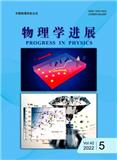
物理学进展(不收版面费审稿费)
北核,武A
CN中文-双月刊影响因子0.368
-
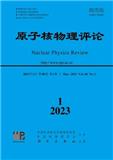
原子核物理评论
北核,科核,CSCD扩,高T3
CN中文-季刊影响因子0.365
-

波谱学杂志
科核,武A-
CN中文-季刊影响因子0.935
-
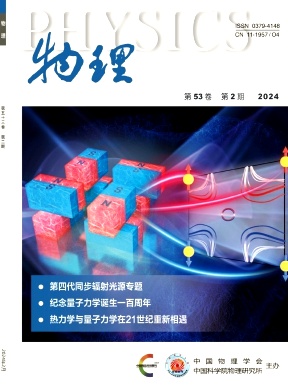
物理
北核,武B+
CN中文-月刊影响因子1.153
-
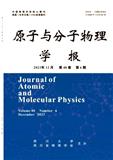
原子与分子物理学报
北核,武B+
CN中文-双月刊影响因子0.667
-
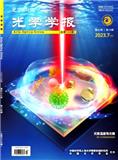
光学学报
北核,CSCD,科核,武A+,高T1,EI(中国2024)
CN中文-半月刊影响因子2.91
-
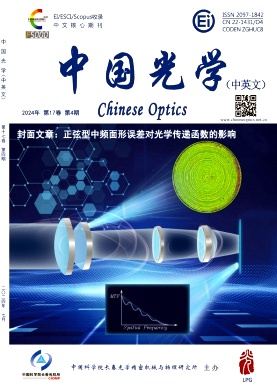
中国光学(中英文)(原:中国光学与应用光学)
北核,CSCD,科核,武A,高T2,EI(中国2024)
CN中文-双月刊影响因子2.336
-
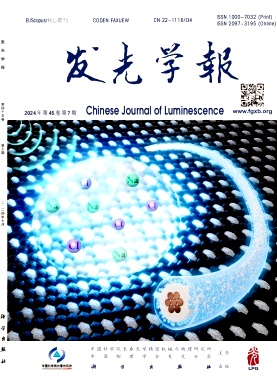
发光学报
北核,CSCD,科核,武A,高T2,高T3,EI(中国2024)
CN中文-月刊影响因子1.356
常见问题
-
光电子前沿杂志社官网、联系方式是什么?
光电子前沿杂志社官网:http://journal.hep.com.cn/foe/
投稿网址:https://mc.manuscriptcentral.com/foe联系电话:027-87793063
投稿邮箱:mamm@hep.com.cn、foc@mail.hust.edu.cn(官网邮箱) -
光电子前沿杂志是核心期刊么?
光电子前沿是核心期刊,级别是:CSCD,科核,EI(中国2024), 是:物理分类下的知网,万方目次,维普目次收录的期刊。
-
请问你们是光电子前沿杂志社吗?
我们不是《光电子前沿》杂志社。本站主要从事期刊信息展示与期刊推荐,不是任何杂志官网,直投稿件请联系杂志社。本站仅提供免费的学术指导、论文辅导、期刊投稿信息整理收集服务。
-
你们指导服务后可以保证文章被发表吗?
期刊发表的成功与否,主要取决于文章内容的质量。编辑老师会根据研究领域、创新性等多因素进行考量。我们会帮助您理解期刊的发表要求,助力提升发表几率,从而增加发表的机会。
-
晋级论文能否在报纸上发表?
在学术界,论文的发表往往被视为研究者职业发展的重要一环。晋级论文,即为了获得更高职称或学术地位而撰写的学术论文,通常需在专业期刊上发表。然而,许多人可能会问
